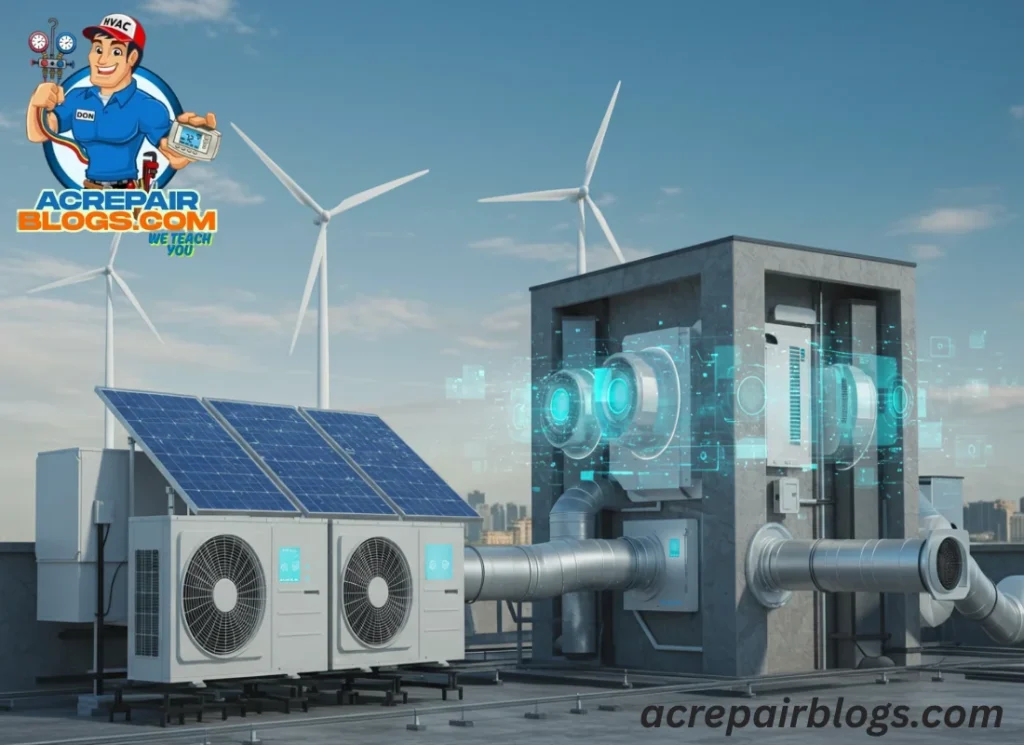How AI is Transforming HVAC Diagnostics
Introduction: The Rise of AI in HVAC
The HVAC (Heating, Ventilation, and Air Conditioning) industry has always relied on mechanical expertise, regular inspections, and preventive maintenance to keep systems running. AI in HVAC diagnostics is a technique that uses artificial intelligence and analysis to update system efficiency. It changes the way the HVAC system is monitored and maintained.
With the help of a description, you can understand how AI is used for the diagnostics of HVAC systems. In the industry, you can also find that predictive analytics is a prominent element. Using technology this indicates the transformation of HVAC systems.
Understanding AI in HVAC Diagnostics
Before diving into the applications, it is important to understand what AI in HVAC diagnostics really means.
Artificial Intelligence is the technology that optimizes and analyzes data to solve problems.
- Sensors IoT devices are efficient devices that save data, temperature, airflow, and energy consumption.
- AI-powered software interprets this data in real-time.
- The system has the ability to adjust automatically.
Simply put, AI turns your HVAC system from a reactive machine into a proactive, intelligent system.
How AI is Used in HVAC Diagnostics
Frequently, diagnosing HVAC problems requires regular checkups and a process of elimination.
With AI, the process is much faster and more precise. Here are some ways AI is transforming diagnostics:
1.Fault Detection and Alerts
AI algorithms analyze sensor data and detect irregularities that may signal component failures. For example, a subtle change in compressor vibration could alert technicians to a potential breakdown before it happens.
2.Automated Troubleshooting
With AI solutions for HVAC troubleshooting, systems can pinpoint the root cause of an issue, whether it is a clogged filter, refrigerant leak, or electrical fault, saving technicians hours of guesswork.
3.Remote Monitoring
AI-powered HVAC platforms allow continuous, remote monitoring. Facility managers no longer need to be on-site; they can track performance through dashboards and receive real-time alerts.
4.Predictive Analytics for HVAC Systems
Instead of waiting for a failure to occur, AI uses predictive analytics to forecast when parts will need maintenance or replacement.
Benefits of AI in HVAC Maintenance
The benefits of using AI in HVAC maintenance go beyond comfort. Here are the key benefits
- Reduced interruption
HVAC interruption can be costly for businesses and uncomfortable for homeowners. With AI for reducing HVAC interruption, issues are detected early, and predictive maintenance ensures repairs happen before systems fail.
- Lower Maintenance Costs
AI makes sure maintenance is performed only when necessary. Rather than adopting hard maintenance.
- Energy Efficiency
AI modifies the HVAC system. For example, it might adjust airflow and temperature based on occupancy data, reducing wasted energy.
- Equipment Durability
By avoiding unnecessary use and several faults, AI increases the durability of HVAC systems and saves on energy bills.
- Better Indoor Air Quality
AI monitors airflow, humidity, and pollutants in real-time, ensuring your indoor environment remains safe and comfortable.
Predictive Analytics: The Game-Changer in HVAC
Traditionally, HVAC maintenance followed two models:
- Reactive maintenance: Fixing problems after they happen.
- Preventive maintenance: Scheduled inspections, regardless of whether an issue exists.
With reactive maintenance, you face high costs, whereas preventive maintenance causes a loss of resources and time.
Predictive analytics for HVAC systems, however, uses machine learning models to analyze historical and real-time data. By recognizing subtle trends and anomalies, it forecasts when a part will fail or when a system is about to become inefficient.
For example, predictive analytics might alert a technician that a motor bearing will fail in two weeks based on vibration data. This is the required schedule replacement to prevent sudden breakage.
Real-World Applications of AI in HVAC Diagnostics
AI is not just a concept; it is already being applied across industries:
1.Commercial Buildings
Large office spaces use AI to monitor occupancy and adjust heating/cooling automatically, improving energy efficiency while maintaining comfort.
2.Industrial Facilities
Factories and warehouses benefit from AI-powered predictive maintenance, ensuring production is not interrupted by HVAC downtime.
3.Smart Homes
Homeowners are adopting smart thermostats and AI-driven systems that learn user preferences and adapt cooling/heating schedules accordingly.
4.Healthcare Facilities
AI helps hospital systems to maintain the humidity level and temperature, where patient safety is the actual motive.
Role of AI in Smart HVAC Systems
Modern HVAC systems are no longer standalone machines; they are part of smart ecosystems. AI integrates with IoT devices, cloud computing, and smart building management systems to create:
- Self-adjusting climate control that learns user behavior.
- Automatic diagnostic systems reduce the need for technicians.
- Energy optimizers that maintain the demonstration.
The liability of AI in smart HVAC systems is becoming low. Converting the HVAC systems into a central element of a smart building.
Challenges and Limitations of AI in HVAC
While AI is transforming HVAC systems, it is important to recognize the problem:
- Upfront Costs: AI-powered systems and sensors require investment.
- Data Security: Connected devices can be vulnerable to cyber threats.
- Training Needs: Technicians need new skills to work alongside AI.
- Integration Issues: Older HVAC models may not be compatible with modern AI tools.
However, as technology advances and adoption grows, these barriers are gradually reducing.
Conclusion
AI technology transforms HVAC systems easily. By monitoring intelligently, automatic troubleshooting can modify the strength of the system. As adoption grows, businesses and homeowners who embrace AI will enjoy not just comfort, but smarter, more sustainable climate control.
If you have been wondering about the benefits of AI in HVAC maintenance or how it can revolutionize your heating and cooling systems, the future is already here, and it is powered by artificial intelligence.
